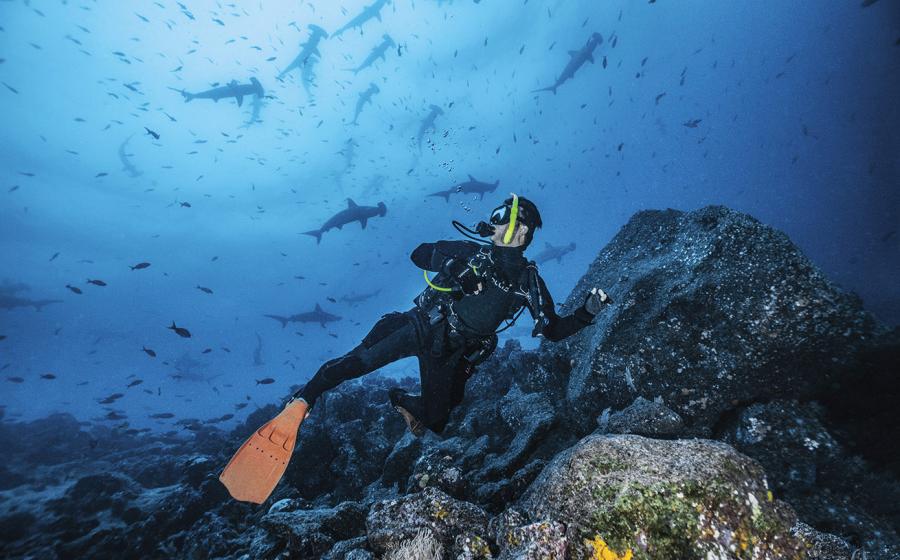Underwater Photos: 9 Ocean in Motion Shots
There are many reasons underwater photographers show movement in their imagery: to capture a fast-swimming subject or emphasize the way it moves, to showcase the beauty of a scene, or to be playful. Whatever the reason, the photos here are amazing examples of the ocean in motion.

Damien MauricThe movement of lionfish has been compared to a flamenco dancer snapping out a fan. For this photo, shot on a shallow reef in the Maldives, the photographer rotated his housing and fired his strobes on the rear-curtain sync to freeze the fish. The intent: give the feel of an image where everything is in motion.

Imran AhmadUsing a slow shutter speed to create movement produces a very different effect from an image where the subject is frozen with a fast shutter speed. In this case, the technique lends a wow factor to a Maldivian sunset over the Indian Ocean.

Alex MustardThis Flabellina pellucida against a star-trail background is a composite of 77 photos. Like this shot, most star-trail photos are taken as a series of more-moderate exposures (about 30 seconds), then blended together using star-trail software.

Gabriele DonatiFor fast-moving subjects — such as these blackfin barracuda on Sanganeb Reef, Sudan — get in as close as possible. The technique conveys how a fish school moves nearly as one and captures its massive, swirling beauty.

Christian VizlSharks are among the most elegant, powerful swimmers in the ocean. This image captures a silky shark — photographed off Camaguey, Cuba — and how it uses its tail like a propeller, swinging it back and forth to move forward.

Mark FullerA slow shutter speed can enhance the movement of a subject, providing another dimension to the image. In this case, the graceful swimming motion of the anthia — photographed in the Red Sea — makes it seem as if it is painted on canvas.

Lill HaugenTwice a day, strong tidal currents push through Norway’s narrow sound, Skodjestraumen, a beautiful area for kelp. Add a creative effect by using a long exposure, and you can capture the movement of the swaying kelp in the ripping current.

Alex MustardThe allusion of movement in this reef scene emphasizes the changing currents on a wall in Indonesia’s Misool region. The currents here can run in all directions; in fact, this particular sea fan has grown into a strange shape so that it can filter the water from whichever direction the current is coming.

Alex MustardA helmet gurnard flares its winglike pectoral fins as a warning and flees across the sand in Indonesia’s Lembeh Strait. A long exposure — in this case, 1/13 of a second — combined with panning with the subject, creates the sense of movement.










